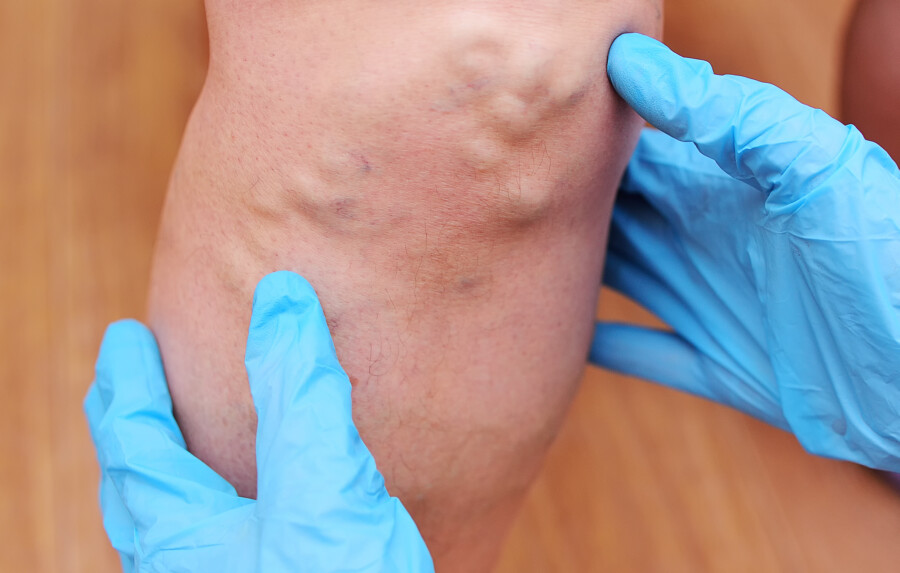Deep Vein Thrombosis: Symptoms, Causes, Treatment
What are the symptoms of deep vein thrombosis?
Deep vein thrombosis (DVT) occurs when a blood clot forms in a deep vein, usually in the legs. The symptoms of DVT can vary, but common signs and symptoms include:
- Swelling: Swelling in the affected leg, usually in the calf or thigh, is a common symptom of DVT. The swelling may be accompanied by a feeling of heaviness or tightness in the leg.
- Pain: Pain or tenderness in the affected leg, often starting in the calf and resembling cramping or soreness, is another common symptom of DVT. The pain may worsen when standing or walking and may improve when resting or elevating the leg.
- Warmth: The skin over the affected area may feel warm to the touch compared to the surrounding skin.
- Red or discolored skin: The skin over the affected area may appear red or have a bluish or purplish hue.
- Swollen veins: In some cases, the veins near the surface of the skin may become more visible or prominent.
It’s important to note that not everyone with DVT will experience symptoms, and some people may only have mild symptoms. However, DVT can be a serious condition that requires prompt medical attention. If you experience any symptoms of DVT, especially if they occur suddenly or are severe, see your healthcare provider immediately.
What are the causes of deep vein thrombosis?
Deep vein thrombosis (DVT) occurs when a blood clot forms in a deep vein, typically in the legs. The exact cause of DVT is not always clear, but several factors can increase the risk of developing this condition. Common causes and risk factors for DVT include:
- Prolonged immobility: Long periods of immobility, such as during long flights or car rides, can increase the risk of DVT. Immobility can cause blood flow to slow down, making it easier for a blood clot to form.
- Surgery or injury: Surgery, particularly major surgery involving the hips, knees, or abdomen, can increase the risk of DVT. Trauma or injury to a vein can also increase the risk.
- Certain medical conditions: Certain medical conditions and treatments can increase the risk of DVT. These include cancer, heart disease, lung disease, and inflammatory bowel disease (Crohn’s disease or ulcerative colitis). Hormone therapy and some types of cancer treatment can also increase the risk.
- Pregnancy and childbirth: Pregnancy increases the risk of DVT due to changes in hormone levels, increased pressure on the veins in the pelvis, and decreased blood flow from the legs.
- Obesity: Being overweight or obese increases the risk of DVT, as excess weight can put pressure on the veins and slow down blood flow.
- Smoking: Smoking can damage blood vessels and increase the risk of DVT.
- Family history: A family history of DVT or blood-clotting disorders can increase the risk.
- Age: The risk of DVT increases with age, especially after age 40.
- Certain medications: Some medications, such as birth control pills and hormone replacement therapy, can increase the risk of DVT.
It’s important to note that not everyone with these risk factors will develop DVT, and some people may develop DVT without any known risk factors. If you are at risk for DVT, speak with your healthcare provider about ways to reduce your risk, such as staying active, maintaining a healthy weight, and avoiding long periods of immobility.
What is the treatment for deep vein thrombosis?
The treatment for deep vein thrombosis (DVT) aims to prevent the blood clot from getting larger, reduce the risk of complications, and prevent the clot from breaking loose and traveling to the lungs (pulmonary embolism). Treatment typically involves medications and lifestyle changes. Common treatments for DVT include:
- Anticoagulant medications: Also known as blood thinners, these medications help prevent new blood clots from forming and reduce the risk of existing clots getting larger. Common anticoagulants include heparin, warfarin, and direct oral anticoagulants (DOACs). These medications are usually given for several months, depending on the individual’s risk factors and the severity of the DVT.
- Thrombolytic therapy: In some cases, especially when the DVT is extensive or causing severe symptoms, thrombolytic therapy may be used to dissolve the blood clot. This treatment involves the use of medications that help break down the clot.
- Compression stockings: Wearing compression stockings can help improve blood flow in the legs and reduce swelling. These stockings are tightest at the ankle and gradually loosen as they move up the leg.
- Elevating the affected leg: Keeping the affected leg elevated when sitting or lying down can help reduce swelling and improve blood flow.
- Lifestyle changes: Making lifestyle changes such as staying active, maintaining a healthy weight, and avoiding long periods of immobility can help reduce the risk of DVT.
- Surgery: In rare cases, surgery may be needed to remove a blood clot from a deep vein. This procedure, known as thrombectomy, is typically reserved for severe cases of DVT that do not respond to other treatments.
It’s important to follow your healthcare provider’s recommendations for treating DVT and to take medications as prescribed. Untreated DVT can lead to serious complications, including pulmonary embolism, so it’s important to seek prompt medical attention if you suspect you have DVT or are at risk for developing it.




